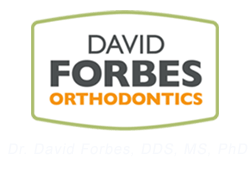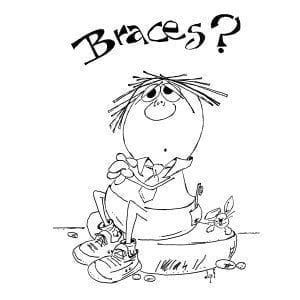Reasons For Orthodontic Treatment For Children & Adults
Most people look in the mirror and recognize that something is wrong with their smile. The arrangement of the teeth is off. The problem with this diagnosis is that they are not exactly sure of the reason. Sometimes the tooth that they find irksome may be the only correct tooth in the bite. Other times, that tooth is misplaced because other teeth have erupted earlier in wrong positions and have forced the problem tooth to be out of place. Below is a list of factors involved in deciding what contributes to a bad bite. These factors may be discussed in your evaluation for orthodontic treatment.
- Breathing problems– Mouth breathing can create thickened gums and may reflect an upper airway or a sleep disordered breathing problem (1 in 3 adults have a sleep disordered breathing problem). Jaw posturing problems as a result of airway issues can alter the growth patterns of the child.

- Crossbite– the misguided placement of a tooth or teeth when the upper and lower teeth contact. Typically, with a crossbite, the upper teeth are
positioned inside the lower teeth instead of overlapping them.
- Crowding– Involving extra teeth or malpositioned teeth.
- Impacted teeth – Some teeth become blocked out and cannot erupt. They are called impacted teeth. The most commonly affected tooth is the upper canine. Impacted teeth may be damaging to neighboring permanent teeth.
- Deep Overbite– The upper front teeth overlap the lower front teeth.
- Overjet– When the upper teeth protrude beyond the lower teeth (frequently a smaller lower jaw creates this problem).
- Disproportionate Growth of the Facial Bones– When one facial bone grows differently than another facial bone which affects the development of the jaws and position of the teeth.
- Jaw & jaw joint pain (TMJ)– Joint pain may result from deflecting tooth contacts that create twisting in the joints.
- Underbite – When upper and lower teeth don’t match, with the lower teeth in front of the upper teeth.
- Self-image– With a beautiful smile comes a boost to your self-esteem and social mobility.
- Spacing between teeth– Teeth are frequently missing congenitally (3-5% of the population) or small in size, or unnaturally separated.
- Extra teeth– Surprisingly, people can develop too many teeth. The extra tooth may displace other teeth and position them in the wrong location.
- Cleft Lip and or Palate – One child in 2000 births is born with a cleft of the lip and palate. A team approach is essential to creating the proper sequence of care. As a former Co-Director of the Cleft Palate Institute at Northwestern University, Dr. Forbes has treated and directed the treatment of numerous children with these types of problems. He currently is a member of the American Cleft Palate and Craniofacial Association. He frequently consults with members of the University of Illinois Craniofacial Team.





